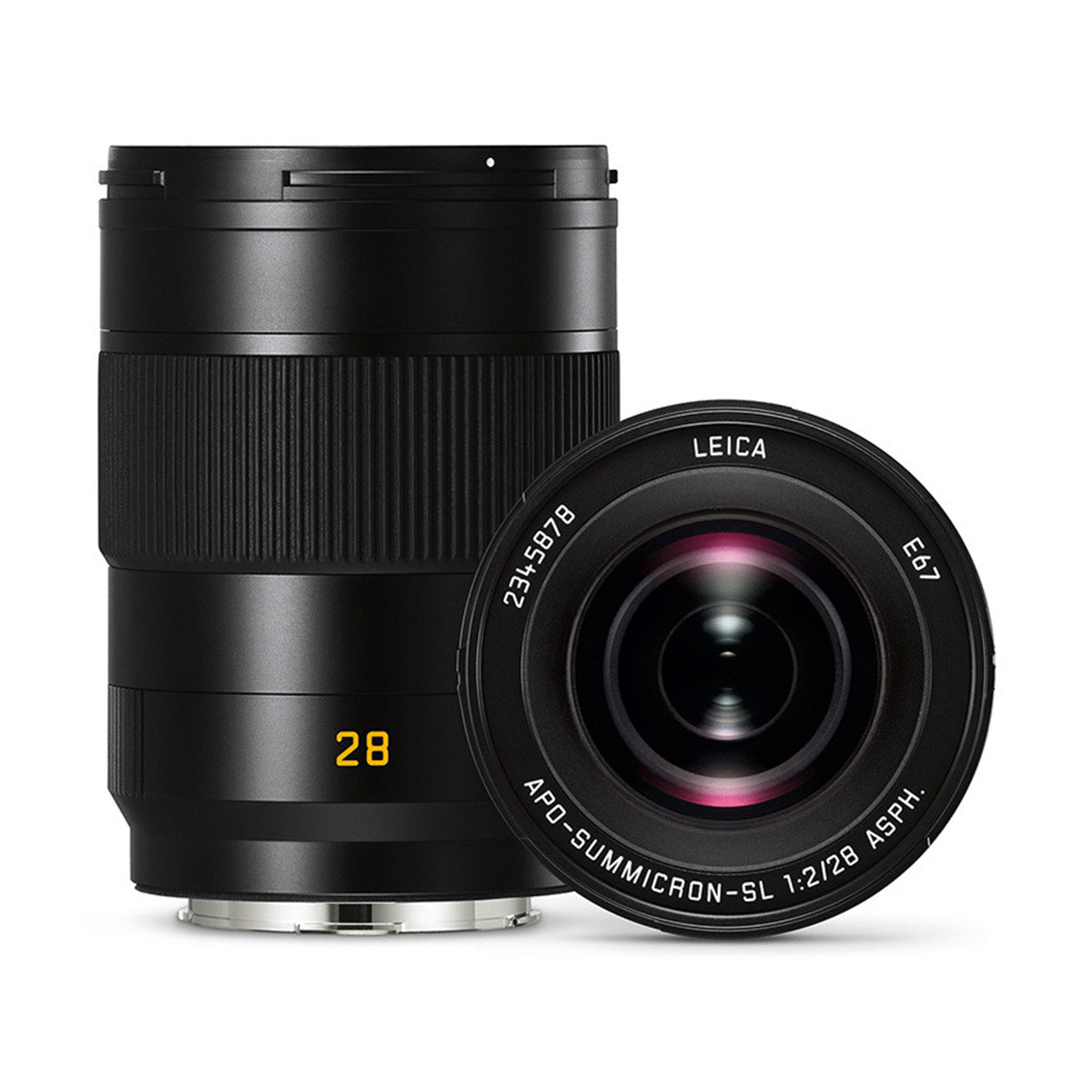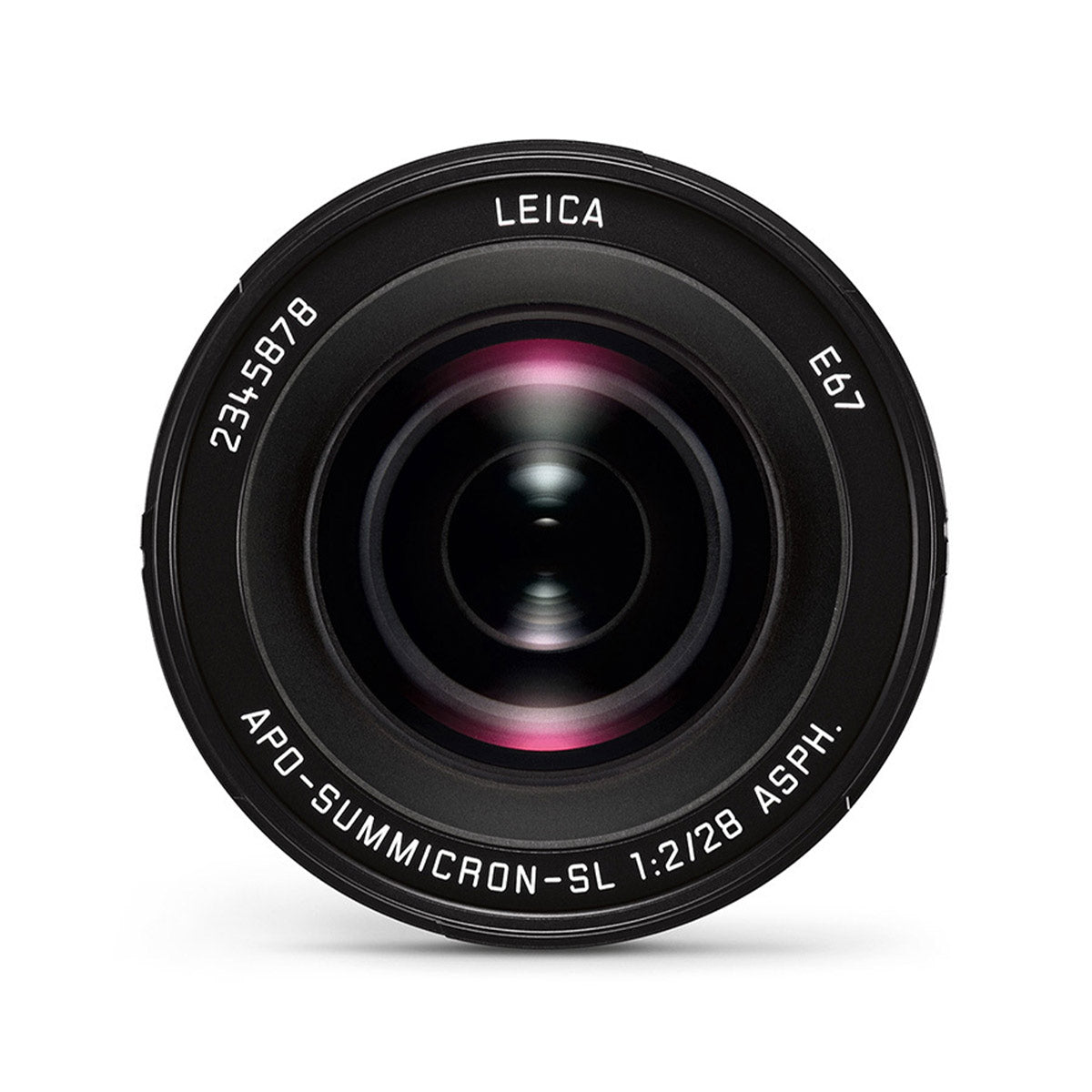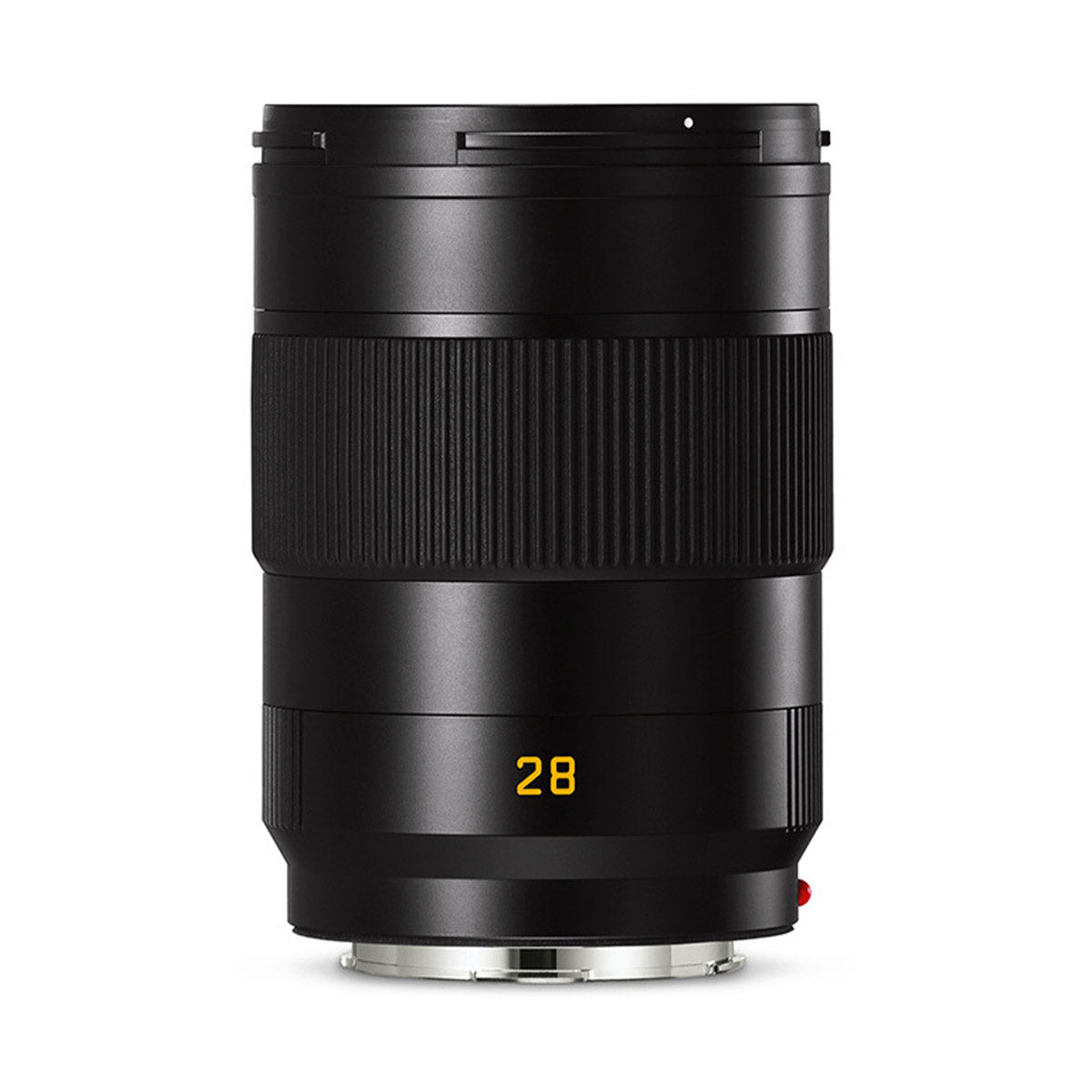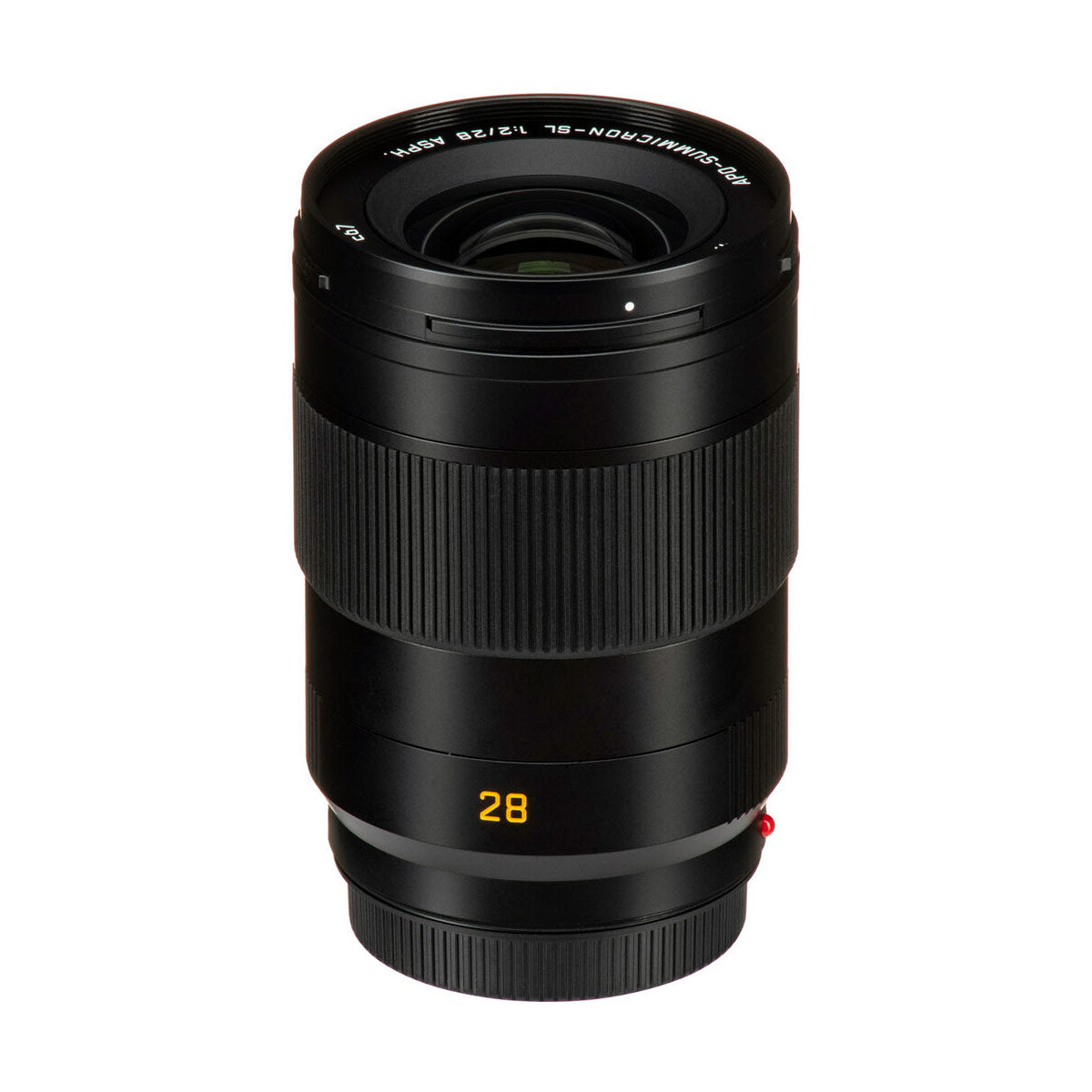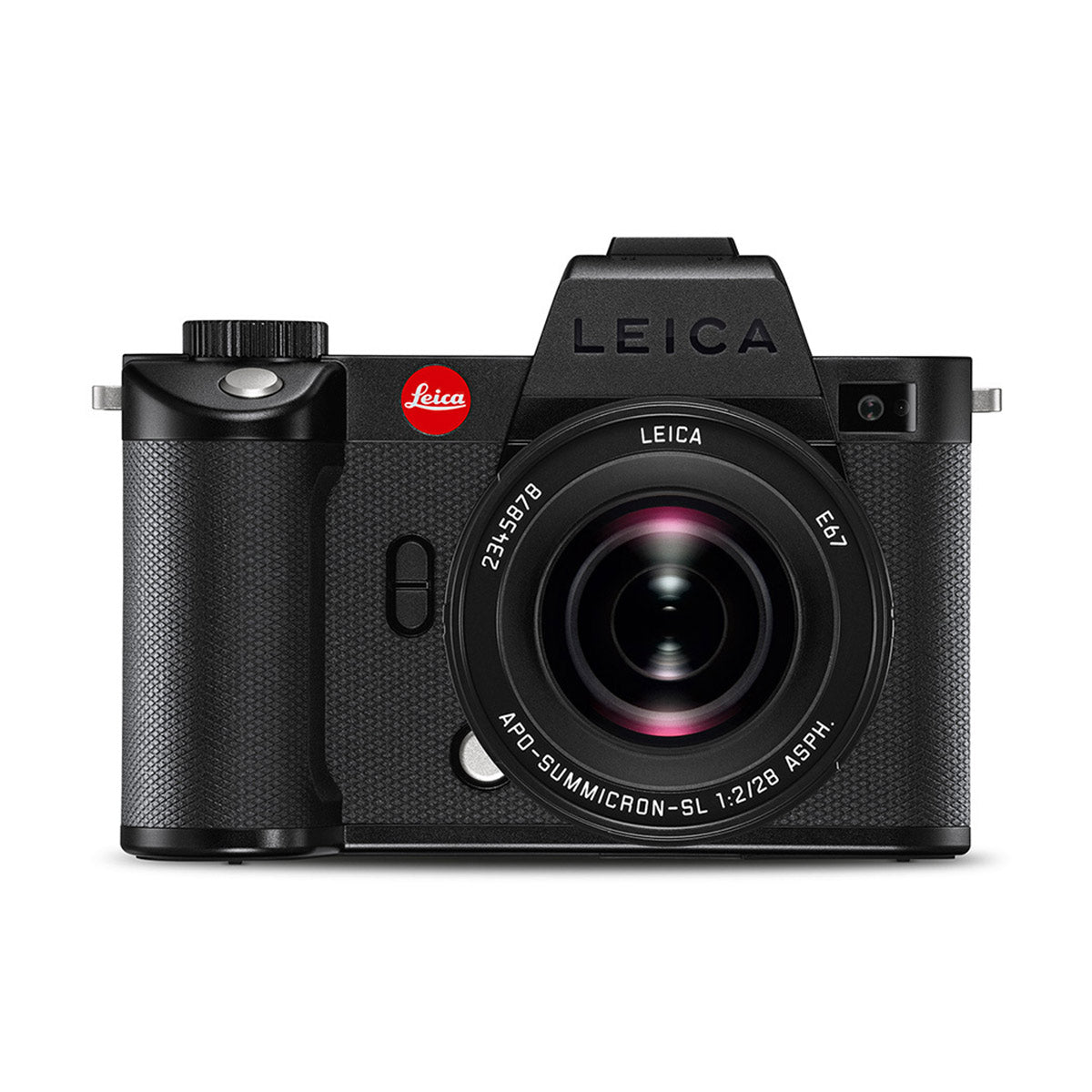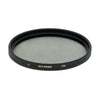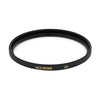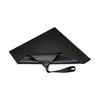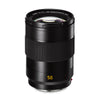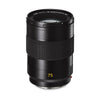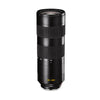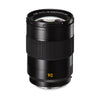- Excellent optical performance
- Same dimensions and filter size as all APO-Summicron-SL lenses
- Close-focusing down to 0.79'
- Extremely fast and reliable autofocus with Dual Synchro Drive
-
28mm f/2 APO-Summicron-SL ASPH Lens
-
SL Rear Lens Cap
-
Lens Hood
-
Lens Cap
-
Lens Bag
-
Limited 2-Year Warranty
Description
The Leica 28mm f/2 APO-Summicron-SL ASPH Lens combines a classic wide-angle focal length with state-of-the-art technology. Its angle of view provides a good overview, both for interior and exterior scenes, without any undue distortion of the perspective.
The ability to accentuate the focal plane at open aperture without loss of quality gives the photographer a far greater scope of creative possibilities. This makes the APO-Summicron-SL 28 f/2 ASPH. not just a universal lens, but one that produces truly extraordinary compositions.

AF System with Dual Syncro Drive™ - From zero to sharp in no time
The AF system of the Summicron-SL lenses is fast, precise, and almost silent. They thank their outstanding AF performance figures to the autofocus drive unit they share. These are limited only by the mass of the lens elements moved when focusing, the travel from infinity to the closest focusing distance and, of course, the amount of space available. In order to preserve the compact dimensions of the lenses, the integration of these components must follow an integral approach.

Specialists from the areas of optical and mechanical engineering and electronics worked together in an interdisciplinary team on the development of a unique lens concept based on double internal focusing. This system, comprising two particularly light focusing lenses, allows the construction of particularly small and compact drive systems. In addition to space limitations, the choice of the drive motors is also determined by the AF principle used for focusing.
Several contrast measurements at various focusing positions must be made before the correct direction of motion for focusing can be determined and followed by precise focusing. In this procedure, the focusing lenses must be moved rapidly backwards and forwards in accordance with the speed specifications of the contrast AF system. This requires a dynamic drive system without any play.
In the Summicron-SL lenses, the drive units installed are extremely powerful and robust stepping motors with Dual Syncro Drive™. Thanks to these, the entire focusing throw can be traveled completely in fractions of a second. This means that the Summicron-SL lenses achieve values that are among the best in the full-frame system segment in terms of speed, precision, and noise emissions.

Higher Contrast for greater perceived depth
With an initial aperture of f/2, the SL-Summicron lenses are significantly more compact than faster lenses, but still allow photographers to work with similar depth of field. The reason for this is contrast: the zone of highest contrast is perceived by viewers as being sharp, while zones with lower contrast are regarded as being unsharp.
In the case of SL-Summicron lenses, this difference in contrast is considerably higher than that of conventional lenses: sharply focused objects show much higher contrast than objects that are out of focus. This means that objects “snap” more distinctly out of the foreground or background and more effectively isolate the subject. This creates a three-dimensional visual effect with very impressive apparent depth.

Optically and Mechanically - A new standard
In the construction of the Summicron-SL lenses, particular attention has been paid to the prevention of stray light and reflections. The optimization of the optical and mechanical design was carried out in elaborate simulations before the construction of the first prototype lenses. Unavoidable reflections are reduced to the best possible level by high-quality coating of lens surfaces.
Complex Electronics for uncomplicated handling
The focusing and aperture setting functions of a SL-Summicron lens are based on a multitude of control systems and mathematical operations. The demands on the electronics are particularly high in the case of the double focusing system.
The two autonomous focusing units must be moved in perfect synchronization and positioning data have to be analyzed at a very high sampling rate and passed on to the camera. Here, the communication with the camera is so fast that there is no perceptible delay. These are the primary preconditions for fast and precise contrast AF.
The aperture is driven by a stepping motor. Here, a special micro-step control system ensures precise and fast movements with minimized vibration.

Manual Focusing - A new experience
SL-Summicron Lenses feature a totally new manual focusing ring construction concept. In this concept, a ring magnet with alternating north-south magnetization is embedded in the manual focusing ring. The magnetic field changes its polarity when the ring is turned. A sensor monitors the status of the magnetic field and sends the data to the main processor. The drive then shifts the lens to the corresponding focusing position on the basis of the angle of rotation and the rotational speed.
The construction of the MF-ring guarantees reliable sealing against dust and water spray, provides protection against impacts and other mechanical stresses, and prevents focusing inaccuracies as a consequence of temperature fluctuations. Even after years of use, the MF-ring of a SL-Summicron lens impresses with a smooth action without play and homogeneous focusing.

Impressive down to the smallest detail
The consistently compact dimensions, low weight, and the excellent grip and feel of the SL-Summicron lenses are particularly impressive when shooting. Thanks to the almost identical design of the Summicron-SL lenses, feeling for the MF ring is unnecessary after switching lenses and the center of gravity remains largely the same. This means that the camera always lies perfectly in the hand and makes working from a tripod much easier.
Constructional Details
What makes the Leica 28mm f/2 APO-Summicron-SL ASPH Lens so special is an optical system comprising of 13 lens elements produced with unique expertise and the latest manufacturing technology by Leica. Of these, three elements with six aspherical surfaces correct monochromatic aberration, while eight elements manufactured from specially formulated, high-quality glass types ensure chromatic correction throughout the entire focusing range.
Only the particular optical property of these glass types, known as anomalous partial dispersion, makes it possible to compensate for chromatic aberrations with such perfection. As a consequence of this, even highlights in images remain almost completely free of color fringing.
| Lens | |
|---|---|
| Lens Format | Full Frame |
| Lens Mount | Leica L-Mount |
| Focal Length | 28mm |
| Maximum Aperture | f/2 |
| Minimum Aperture | f/22 |
| Focus Type | Autofocus, Manual |
| Image Stabilization | None |
| Filter Size | 67mm |
| Minimum Focus Distance | 9.4" / 24 cm |
| Maximum Magnification Ratio | 1:5 |
| Lens Construction | 13 Elements in 10 Groups |
| Angle of View | 75.4° |
| Physical | |
|---|---|
| Dimensions (Ø x L) | 2.9 x 4" / 73 x 102mm |
| Weight (without lens hood) | 24.7 oz / 700g |

